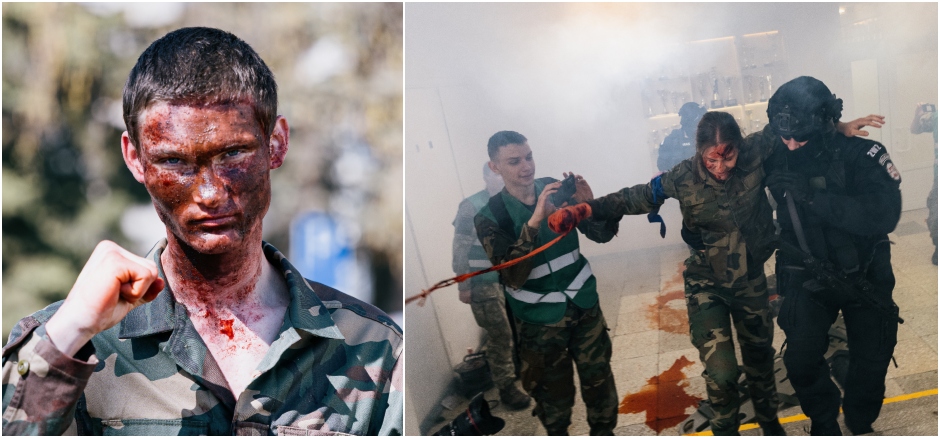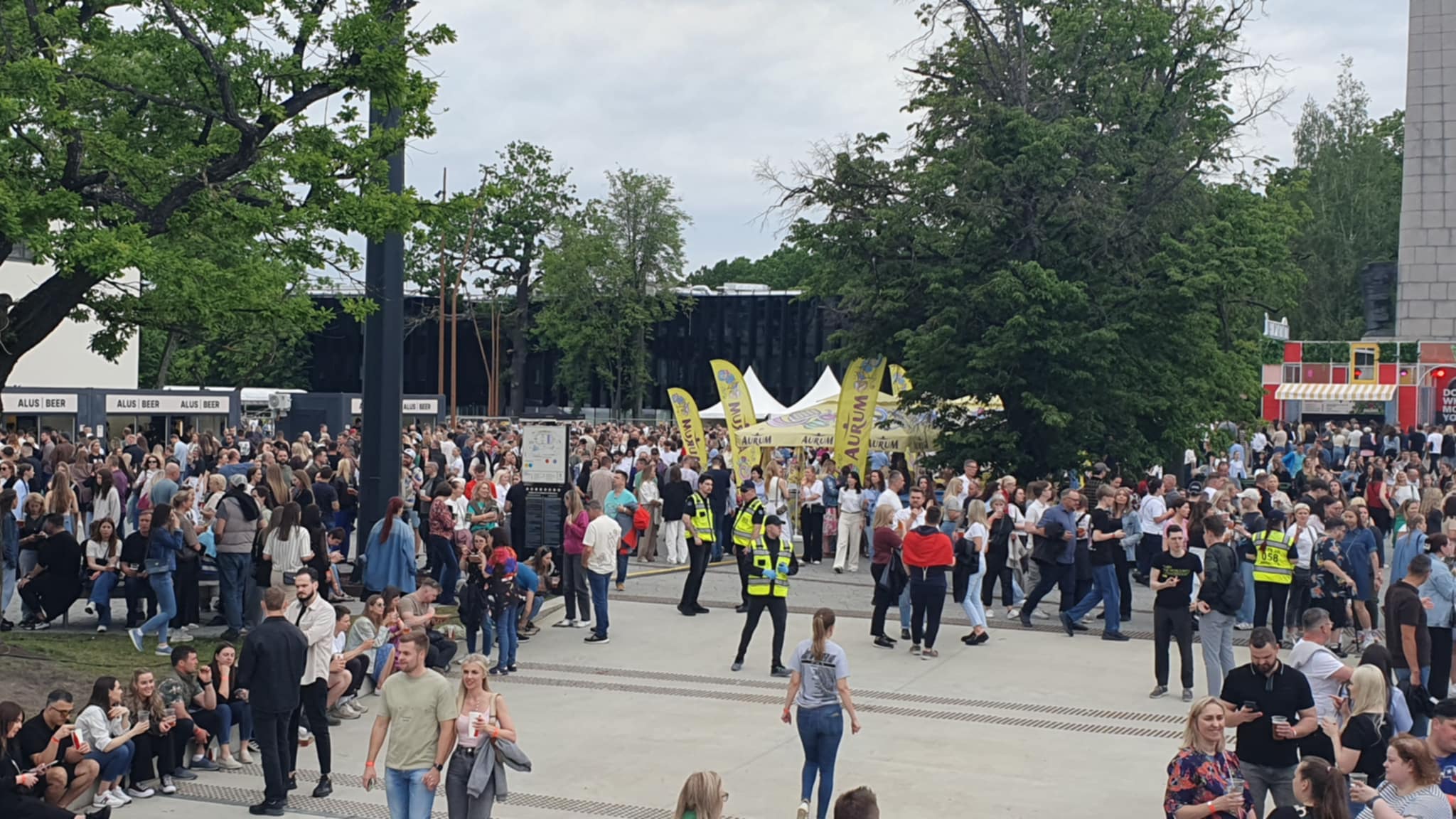Explosion at school: What to do?

Left explosives
It was checked how students and all the main services respond to the simulated incident: police, ambulance, the Fire and Rescue Service, the Lithuanian Riflemen’s Union, the NDVD soldiers.
There was a real evacuation of the school, tested on how the services were working together and where to stretch.
A situation is simulated when a basket with alleged explosives is left at school. Lyceum representatives contact the 112 service. The algorithm starts.
Residents of the surrounding buildings were warned in advance that they could see uniformed and armed service representatives and hear imitation sounds. During the exercise, the movement of residents and cars could be temporarily disturbed by a 500 m radius around the educational establishment.
Action: The services worked for a harmonious share of responsibilities. Photo by Edgar Cickiewicz
Walking things
The students instantly gathered their belongings and left school with teachers. It takes 4-7 minutes to evacuate as estimated. At this time, the service leaders appreciated it as a very welcome.
There were questions about why it was wasteful to search for their belongings and jackets. Richard Žilaitis, director of P. Plechavičius Cadet Lyceum, explained that it all depends on the situation. It is not necessary in the summer, but during the winter, students in the field without outerwear risk freezing; If you are injured, you suffer even greater injuries.
However, even in winter, if the situation was really dangerous, the cadets would be brought out immediately.
Another challenge is that the Lyceum is collected and stored in one place at the Lyceum. R. Žilaitis mentioned that he was considering the creation of radio station educational institutions to share urgent messages in the event of a mobile connection, the Internet.
Stretchers to the victims
Upon arrival, police officers entered the school. Teachers at the stadium, after checking that there are no extraneous items, calculated the cadet. The instructors checked if there were no remaining persons at school.
While the services were doing their job, the cadets were drawn to the pre -intended places from which they had to be taken from their parents, operating in the script that the building is unsafe. Those who could travel home independently also operated according to plan. 72 children from other cities of Lithuania are attending Lyceum. The rest are Kaunas residents.
Whether the building is safe or not is valued by police officers.
Evacuation alone is not limited. The « explosive » was detonated both at school. Another explosive was made by Aro equipment.
The detonated « explosive » injured several students. Aro officials bring stretches of stretcher to the building. The premises are also checked.
Upon arrival, doctors stay outdoors. Until they are confirmed that the building is safe, they only provide assistance to the wounded.
Firefighters are also ready to get involved, as the explosion can cause a fire. A spokeswoman for the Kaunas Fire and Rescue Service is pleased that firefighters do not have to reach hydrants – they are easily accessible, not to be stuck. Otherwise, you would have to waste time pulling cars aside.
Situation: imitated explosions and injuries. Photo by Edgar Cickiewicz
Broadcast to the hall
What happened at school was filmed, and the images and actions of the services were commented on by their representatives to the heads of Kaunas educational institutions gathered in the hall.
« The preparation of each school and kindergarten to protect the lives of our children is very important. Here are the leaders whose decisions lead to more than 18,000 children in Kaunas city. Your engagement, comments and questions will help us all become stronger, » said R. Žilaitis, Director of General Povilas Plechavičius Cadet Lyceum.
This event is dedicated to strengthening the culture of school security and paying attention to the civic preparation for emergencies.
Much more uncertainty
The head of one gymnasium shared the situation in one of the evacuation and asked for advice on what to do next time. One pupil with special needs became unmanageable, disobeyed the call to go with everyone from school to outside.
R. Žilaitis said he had no competence to answer this question. He did not hide the need to work in this area yet.
The heads of schools and kindergartens asked for the list of information about the institution they should have prepared for incoming rescuers in the event of a disaster. They also asked for algorithm what they should take care of in preparation for emergencies.
There were questions about what to do if the drone attack was in the face. Where then to hide? It is unsafe in the stadium or elsewhere.
Relevant: the heads of educational institutions gathered in the hall watched, listened and asked questions themselves. Photo by Edgar Cickiewicz
Importance of preparation
Among the guests of the event are the first lady Diana Nausėdienė, Vice -Minister of National Defense Tomas Godliauskas.
« Whatever the position we serve our home country, we are ready to devote all our wisdom, energy and creation. Recently, there is an increasing number of civil protection in society.
It reminded me of cases where dozens of schools and kindergartens were closed with threats and false reports of explosives. « Such cases have shown how important and how much preparation, planning and coordination of joint action are determined, » said D. Nausėdienė, emphasizing the importance of practical cooperation between generations, institutions, services, educational institutions, including communities and between students themselves.
Vice -Minister Godliauskas said that this exercise is an opportunity to check whether we know our roles, whether we trust each other or whether we are able to make decisions quickly in critical circumstances. The global defense covers all residents, not just the military or state institutions.










